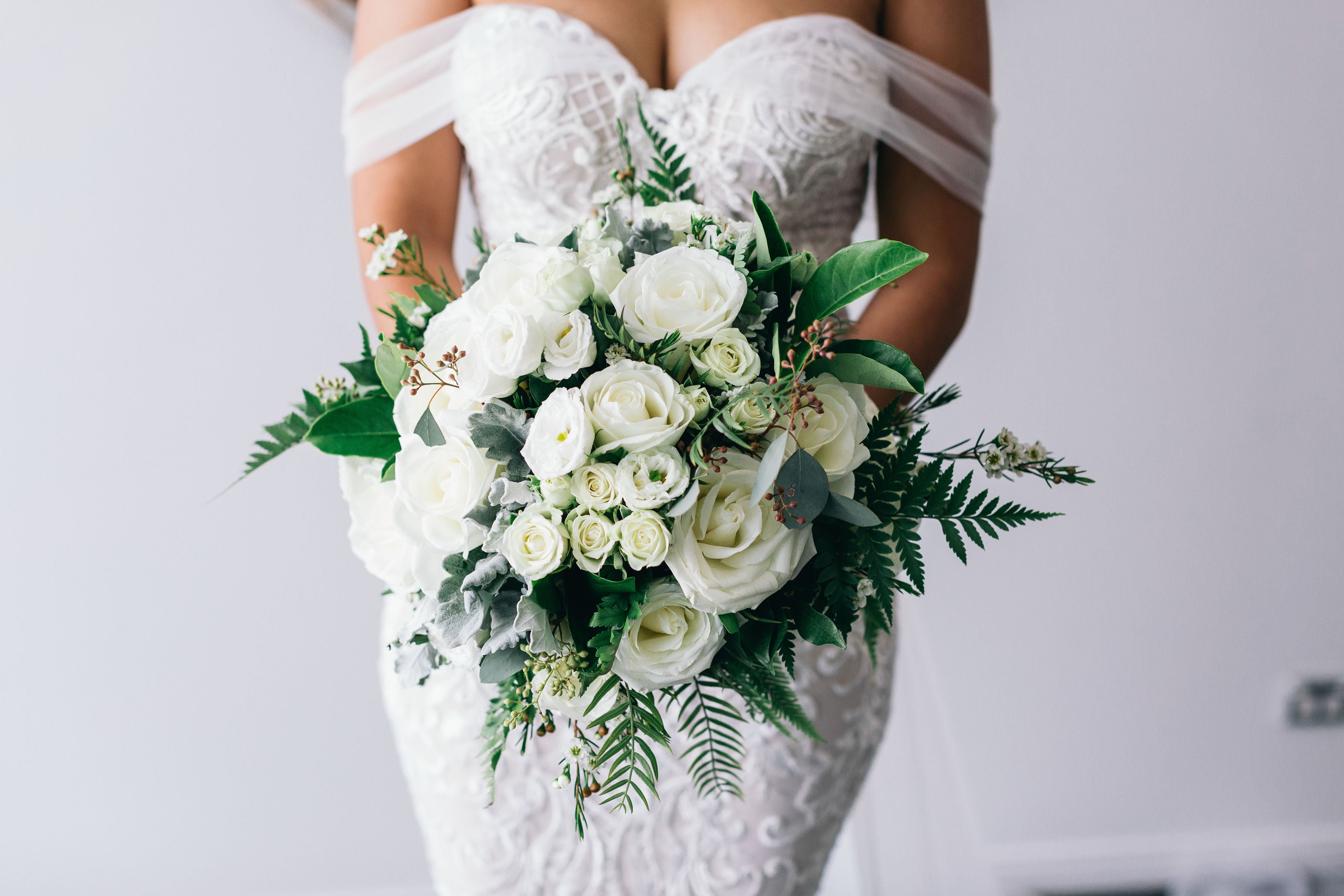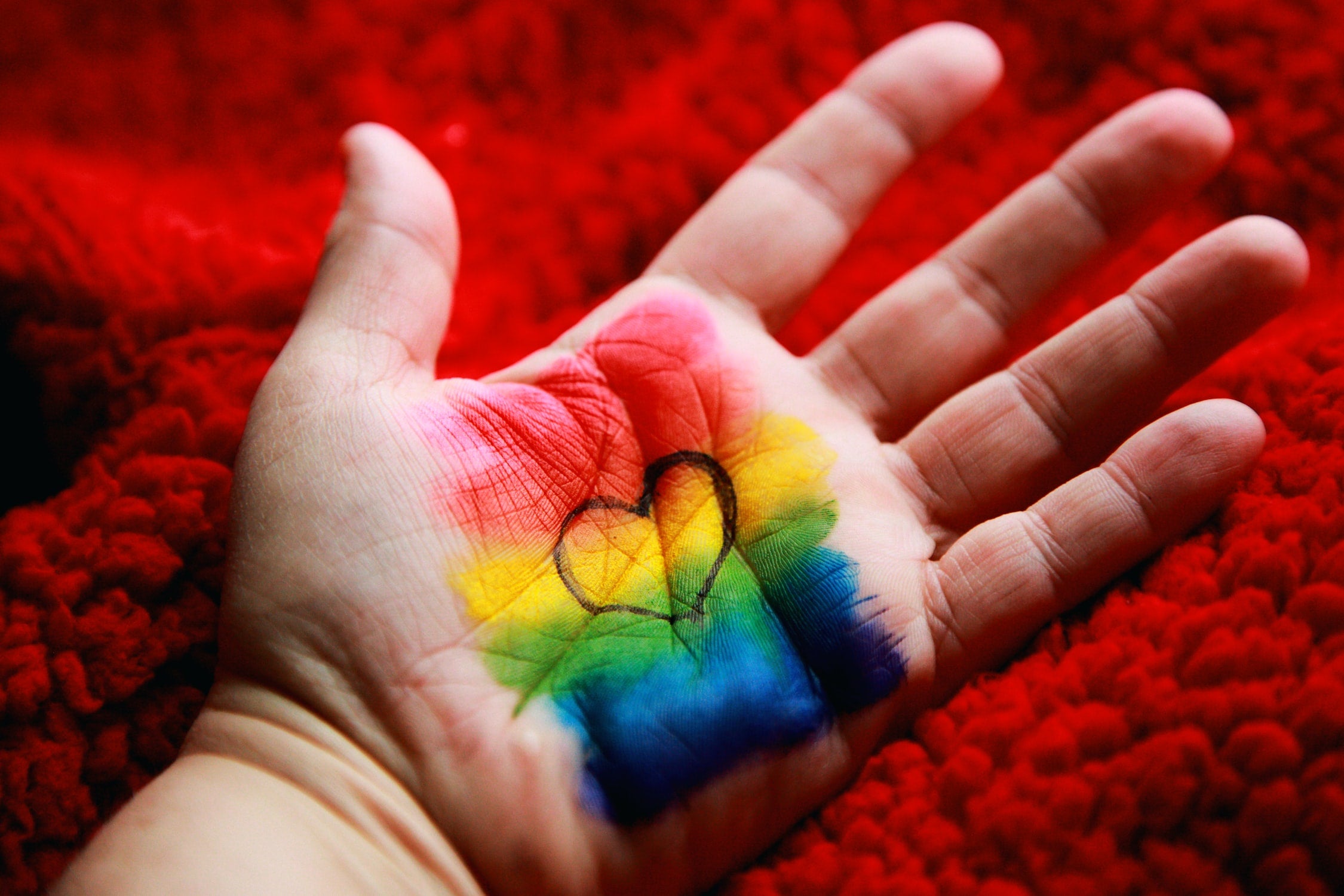
Your Guide To The Bridal Bouquet
The bridal bouquet is something that has become a staple at all weddings for many years. However, bouquets come in so many shapes and forms that it can almost feel overwhelming trying to figure out what style will suit you or what they all mean. So, for today's blog, we wanted to take you through the history of bouquets, all the different types of bouquets, and everything in between.
What is a bridal bouquet?
The bridal bouquet is the selection of flowers a bride holds as she makes her way down the aisle at her wedding. The bridal bouquet is traditionally created to match the chosen theme of the bride's wedding and compliment her wedding gown. It is considered one of the essential accessories on a bride's wedding day, along with the dress and ring.
Why do brides carry a bouquet?
The bouquet is often considered the critical accessory at the wedding ceremony that ties in all aspects of the overall wedding. From the theme to the dress, it's a great way to top off the bride's attire on the day. It's also often the first thing guests will notice when you start your journey down the aisle on your wedding day, and as such, it's an integral part of your overall wedding, much like your gown.
Traditionally speaking, bridal bouquets go deep into history in many different forms. One example of this would be Ancient Rome, where brides would carry flowers to signal the hope of fertility and new beginnings. In the Victorian era, bouquets found their place in the overall wedding ceremony when brides would take a proper bouquet on the day. Initially, the bouquets were generally made up of flowers that had meanings the brides resonated with and qualities they felt represented them. However, as time has gone by, bouquets tend to be more about the focal point of the wedding theme itself rather than the specific meanings of flowers for many brides, although some do still choose bouquets that include particular flowers for their reasons.
Another reason, dating back to the 15th century that brides carried bouquets, was why none of us have today (we hope) with our weddings: they would bring flowers to cover their body smell. This was mainly because a) people rarely bathed and b) when they did; women went after all the males in their household. So bouquets were used to mask the smell of not having bathed for a while.
There's also a reason we've covered before, but essentially it stems from the tossing of the bouquet. In ancient times, it was considered 'luck' for a wedding guest to tear a piece of the bride's gown off or take some of her accessories after the couple had said, I do. So, to help the bride and her groom escape this madness, brides would carry bouquets down the aisle to then toss into the crowd as a distraction to make their escape, which is where the tradition of throwing the bouquet at weddings spawned from.
What flowers should I have in my bouquet?
This will be impossible to answer without factoring in your wedding theme and your personal preference for flowers. However, many flowers always remain popular in bridal bouquets, such as dahlias, roses, lilacs, peonies, hydrangeas, tulips, and more. When choosing the flowers for your bouquet, it's essential to look at what flowers will be in season, your budget, and what will match your theme!
Who else carries a bouquet at my wedding?
Traditionally speaking, the bridesmaids will carry their bouquets. However, there will be other types of florals usually included too. The other florals you'll find worn at a wedding are corsages on women that are family of the bride or groom, boutonnieres for the groom, groomsmen, male family members from both sides, ushers, and ring bearers. Traditionally, a wedding might also have a flower girl carrying a basket of flower petals down the aisle.
Do I need to do the bouquet toss?
The bouquet toss is merely a tradition, as we mentioned earlier, for brides to escape the frenzy of the crowd tearing at her dress, something that doesn't happen anymore. While some brides opt to toss the bouquet, others choose to preserve their bouquet or keep it for their pleasure & happiness. It's totally up to you on your big day.
The bouquet is one of the essential accessories on your wedding day. While most brides opt to have a florist bring their bouquet to life, some choose to create their own instead. While making your bouquet will take up some of your time, money, and a lot of attention to detail, you might find it far more satisfying walking down the aisle with your creation in your hands on your special day.
Creating Your Bouquet: Things You Need To Know
A lot goes into creating a bridal bouquet. The first thing to consider is how you'll shape your bouquet. Many different shapes can make up your bouquet. Figuring out the form that best suits your needs is an excellent place to start considering the types of flowers you'll want to include.
Wedding Bouquet Shapes
Biedermeier Bouquet: This bouquet style is round with several layers of flowers that create layered circles of flowers. Biedermeier bouquets are generally used in artistically styled weddings and use flowers such as dahlias and roses to add texture to the bouquet. This bouquet is usually more complex to pull together than some of the others. It will require a lot of practice and patience to keep all of your chosen flowers layered around each other in circular rotations.
Nosegay Bouquet: This is a simple yet elegant type of bouquet that follows tradition and is a popular choice for many brides. For a Nosegay bouquet, the overall look is generally created by having one flower be the focus while smaller ones are packed tightly around it and tied together with a small piece of fabric wrap, string, or wire in a domed shape. These are often the type of bouquet a lot of bridesmaids also choose to use, as well as brides.
Single Stem Bouquet: For a delicate yet straightforward bouquet, some brides opt to create a 'Single Stem' bouquet. Very much true to its name, this type of bouquet is simply a single larger-sized flower with a ribbon on it. To achieve this bouquet, you would merely find a bloom that matches the aesthetic & theme of your wedding and buy the most prominent possible sizing of it. You'll then see a piece of ribbon, twine or string to wrap around the stem of the flower that matches your color palette to add the finishing touches. This type of bouquet is a great budget-friendly option while also suiting simplistically-styled wedding ceremonies.
Hand-Tied Bouquet: This one is very literal - a bunch of flowers that are hand-tied together with string, ribbon, or fabric to give the bouquet a loose, casual look. This is generally the most straightforward option if you're creating your bouquet because of how simple it is to pull it together. You'll start with a central focal flower, then add more flowers around it in a spiraling way to create a bouquet that is then tied together with ribbon at the stems of the flowers. This is an excellent choice for a more relaxed ceremony to give that effortless vibe to your bouquet.
Round Bouquet: This is likely one of the most popular bouquet types, traditionally speaking. The round bouquet is sometimes considered a combination of several other bouquets in one. It is created by creating a rounded selection of flower blooms with little to no greenery tied together at the stems with ribbon. The Round Bouquet is similar to the hand-tied bouquet we just covered, combined with the posy bouquet we'll cover further down in this blog.
Composite Bouquet: For this type of bouquet, multiple flowers (or petals) are arranged together in a way that reflects one single and much larger flower. This option is definitely on the more complex end of bouquets to pull off and requires quite a lot of skill to piece together perfectly.
Contemporary Bouquet: The modern bouquet is the 'anything goes' of bridal bouquets, flowers, and greenery pulled together at random and unconventional ways. This is an arrangement that we'd suggest diving deeper into photos to get an idea of all the ways brides have used this type of bouquet. It is so wide-ranging in terms of style!
Posy Bouquet: A lighter, less expensive type of bridal bouquet, the Posy is an excellent minimalistic option for brides with a theme that matches that idea. The Posy is also a classic option for many brides. To create a posy bouquet, you'll tie flowers together at the stem with ribbon to create a rounded bouquet. Posy bouquets traditionally use flowers like peonies and roses, among others.
Presentation Bouquet: This type of bouquet is often known as a 'pageant bouquet' due to it being a staple in beauty pageants. However, this bouquet has been more common at weddings, especially in recent years, and is often chosen for two opposite reasons: this bouquet can either be a simplistic sort of chic or an exceptionally elaborate, royal-looking bouquet.
Cascading Bouquet: This one is another bouquet with a name that hits the nail on the head - a cascading bouquet combines flowers in a full bunch at the top that then cascade downwards, getting increasingly smaller towards the bottom. These are often considered the perfect option for brides wearing a minimalist or simple style wedding dress because it's quite an attention-grabbing arrangement to carry down the aisle with you. However, creating this bouquet will require a lot of time and patience (and flowers!) to pull it off and give it that naturally cascading vibe. Using Pinterest or Google Images to check out cascading bouquets by other brides will provide you with a much better idea of ways you can achieve a great final look.
Once you've decided on the specific style of bridal bouquet that you'll want to use, there will still be more work you'll have to do - finding the right place to source flowers in a way that is cost-effective and sits inside your budget can be difficult, but not impossible. So take your time, look around and speak to different florists, flower markets, and flower shops. Ask for quotes to get ideas on what can (or can't) fit within your budget. This will help you find the right bouquet by process of elimination.
When it comes time actually to bring your bouquet together, we would always suggest utilizing some of the incredible creatives on YouTube so you can physically see how people pull bouquets together!
Ultimately, bouquets will revolve heavily around your aesthetic and style, but having some information to help guide you is always a great thing & we hope we were able to help with this blog!



Leave a comment
This site is protected by reCAPTCHA and the Google Privacy Policy and Terms of Service apply.